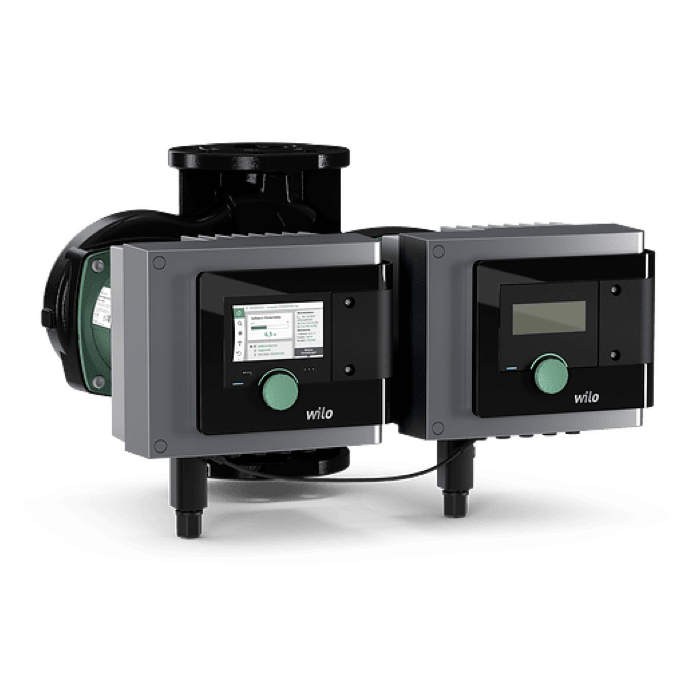Please do not block ads on our site. Clicks on ads help us exist, grow and become more useful for you!
Twin pump

Twin pump is designed to create water circulation in closed loop heating and hot water supply systems.
Pumps in twin construction are developed for systems with high reliability requirements where in addition to the main pump, it is necessary to provide for the installation of a reserve pump. The pump's design does not exclude the simultaneous operation of two pumps in a common network, but the sequential mode of operation of each of the pumps is considered to be the main one.
The main advantages of a single twin pump over a pair of singles are its cost-effectiveness and compactness of the twin design, as well as the built-in automatic activation of the reserve pump.
Twin pump control units, in addition to standard protections and modes of operation, usually provide for the automatic activation of the reserve pump in case of failure of the working one.
The disadvantages of the twin pump compared to a pair of singles include the inability to repair a failed pump without stopping the system and dismantling the entire pair. That is, if you have two single pumps installed and one of them fails, you can simply remove it by disconnecting the valve in the piping of that pump, while the second pump and the entire system will continue to operate.
Applications
Heat substations and boiler rooms as circulation pumps for heating, cooling, ventilation systems and air conditioning systems.
Construction-wise, circulation pumps for hot water supply systems differ from pumps installed in heating systems by the presence of rotor protection from scale and a housing made of corrosion-resistant materials, such as bronze or stainless steel.
Installation of pumps with a wet rotor for transferring coolant in cooling systems is prohibited by regulations, since the motor cooling is provided by the transferred fluid. That is, by cooling the rotor with the transferred fluid, the pump will heat up the coolant.
Advantages
- Cheaper and more compact than a pair of single pumps
- Practically silent
- Very low vibration level
- Does not require support frames
- Long service life
- No shaft seals
- Does not require maintenance
- The inlet and outlet nozzles are located on the same axis
Disadvantages
- Even for pumps of highly efficient design, the efficiency is very low, from 30 to 60%
- High requirements for the quality of the heat carrier
- The axis of the electric motor must be horizontal.
- Not suitable for use in refrigeration systems
- The design features of wet rotor pumps do not allow to create pressure exceeding 15 m (150 kPa)
What can it be replaced with
- Single pump
- In-line dry rotor pump (air-cooled motor) with nozzles located on the same axis
419

 Catalog of
Catalog of 
